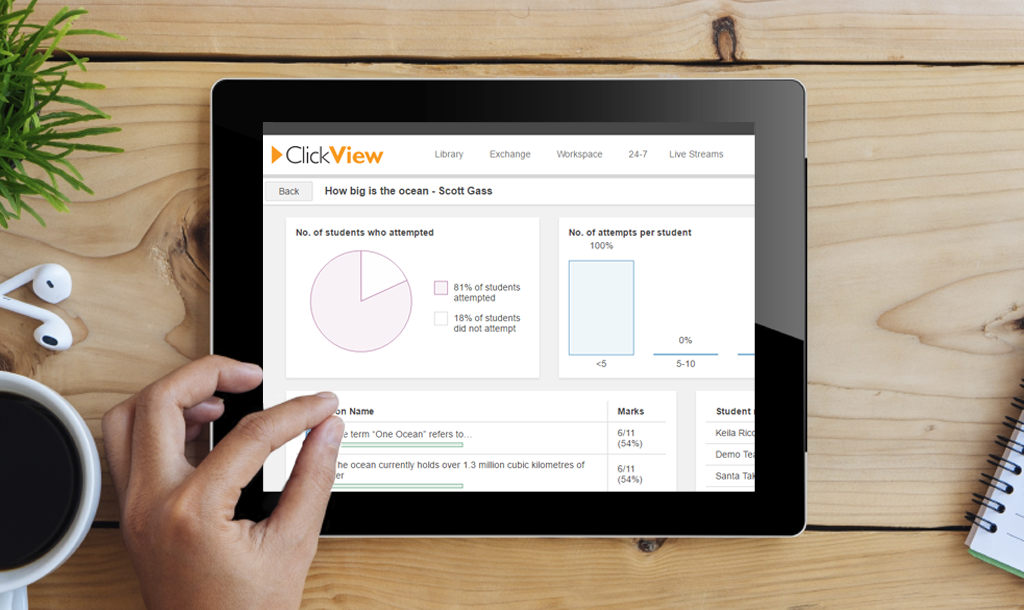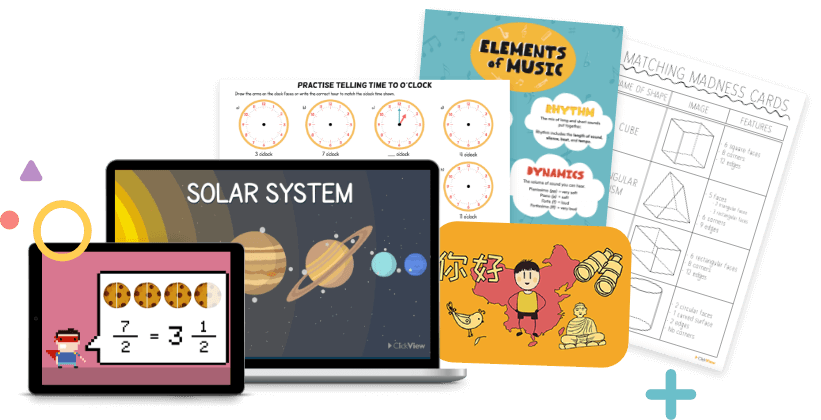Fast 5 minute lesson plans
Time is precious in the life of a teacher. We have an exciting and educationally enriching collection of last-minute lesson plans for when you’re in a pinch. Don’t worry, these are not just ‘video lessons’. Our lessons are designed to be relevant to the current curriculum and are mapped to outcomes. We provide interactive features in many of our videos giving you the flexibility to control how your lesson is implemented and to encourage your students to engage and respond to content. Our passion is for deeper educational experience so you can be confident that with our ‘ 5-minute lesson plans’ you are walking into the classroom with lessons that will empower your students and enhance your teaching experience.
5 Minute lesson plan master: Tips for when you’re pressed for time
Becoming a master of anything takes time. With experience, fast lesson planning will be easy for you. In the meantime, here are some tips and ideas to help.
Find a video relevant to your topic area:
Beginning the lesson with a video is a great way to settle and engage your class and to get them focused on the topic. You can have the students:
- Take notes/summarise key points
- Pause for discussion
- Hypothesise about what happens next
- Assign/ask questions throughout
- Analyse scenes
- Re-watch the video during the lesson to home in on key themes

Allocating a video within your lesson plan gives you time to decide on the direction you will take, and which activities are best suited to that. Many ClickView videos are interactive and require student responses encouraging active viewing and better comprehension. Take a moment to look through some suggested videos to see how our videos can work for you in your classroom.
Plan a focus activity
There are many activities you can do even if you haven’t had time to prepare. Below are some examples that you can use in a pinch to get your students thinking about the topic with zero planning time.
Brainstorming:
The beauty of brainstorming is that it can be used in several different ways to uncover some powerful ideas on a topic from the student’s own background knowledge. Peer supported learning is encouraged with the teacher as facilitator.
For a talkative energetic class, begin with a whole-class discussion or break into small discussion groups; elect a scribe, and then later have the groups present their ideas to the class.
For a quieter class, have the students write their ideas in their notebooks, then have each student come to the board and write one or two ideas that the teacher can later organise on the board.
If your class is a mix of the two, supply a sheet of paper to small groups and have each group write down ideas on a different aspect of the topic for 3-5 minutes. After a time, move students to another sheet of paper and repeat for as long as the activity is productive and then collate all their ideas on the board. Students will be actively learning from each other in small groups through sharing ideas and by reading the ideas written by previous groups.
Consolidate knowledge:
Decide on an activity that will promote student’s in-depth understanding of the topic. This can be done with varying levels of teacher involvement to provide the right amount of scaffolding to promote student autonomy and mastery of your learning objective.
- Teacher lead: This can be as simple as note-taking from the board to setting focus questions for a more in-depth response. You could conduct class research on key areas using trusted internet sites or have students take turns reading relevant passages from the textbook.
- Student lead: If your students have access to devices, have them conduct research into the key area. They can also do this task using their textbooks or books from the library (hot tip: befriend your school’s librarian. They will often be an indispensable ally when you need help in a hurry).
- Remember that many of ClickView’s expertly produced educational videos come with their own teacher packs and resources that are easy to print out and use in your classroom. All content has been designed with subject experts and is mapped to the Australian curriculum. How good is that?

Critical thinking and reflection
In the final 5 to 10 minutes of your lesson have your students think about something new that they have learned during the period and where their learning might take them.
- Whole class: Call out for (5 or more) student responses on what they have learned today. Follow with (5 or more) responses on what might be interesting to learn about the topic in future classes.
- Individual: Same activity but have the students make bullet points (at least 3) for each of the above categories.
- Teacher driven: Draw attention to the learning outcomes addressed during the lesson and ask for student feedback on their overall confidence with the content (show of hands/demonstrate with hands 0-10 ‘need further study’ to ‘confident’). Subsequently, outline the direction of future learning.
Congratulations! With limited preparation time, you have taught an interesting and enriching lesson!






